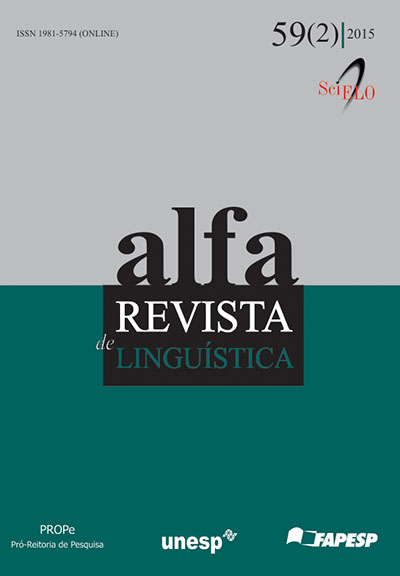Semantic change of ātmán- in the R̥gveda and the Atharvaveda
DOI:
https://doi.org/10.1590/1981-5794-1504-5Keywords:
Semantic change, Diachronic linguistics, Semantic maps, Vedic,Abstract
This paper studies the use of ātmán- in the R̥ gveda and the Atharvaveda, and aims to show an ongoing semantic change through the period of composition and compilation of these texts. The theoretical approach used here is cognitive and typological-functional. In order to accomplish the research, all cases where ātmán- is used in the corpus have been analyzed both grammatically and philologically. Among the main outcomes, there is the fact that ātmán- acquires new meanings and uses through this process (‘being, ‘self’), without losing the old ones (‘vital breathe’, ‘breathe’). The systematization of the different uses into a semantic map leads to the conclusion that: 1) the directionality of this semantic change is similar to that of equivalent words in other languages, and 2) this change is tightly connected to the one previously experienced by tanū́- ‘body, ‘self’. Thus, this research aims to provide individual evidence for crosslinguistic studies on grammaticalization and the directionality of change.
Downloads
Downloads
Published
How to Cite
Issue
Section
License
Manuscripts accepted for publication and published are property of Alfa: Revista de Linguística. It is forbidden the full or partial submission of the manuscript to any other journal. Authors are solely responsible for the article's content. Translation into another language without written permission from the Editor advised by the Editorial Board is prohibited.

